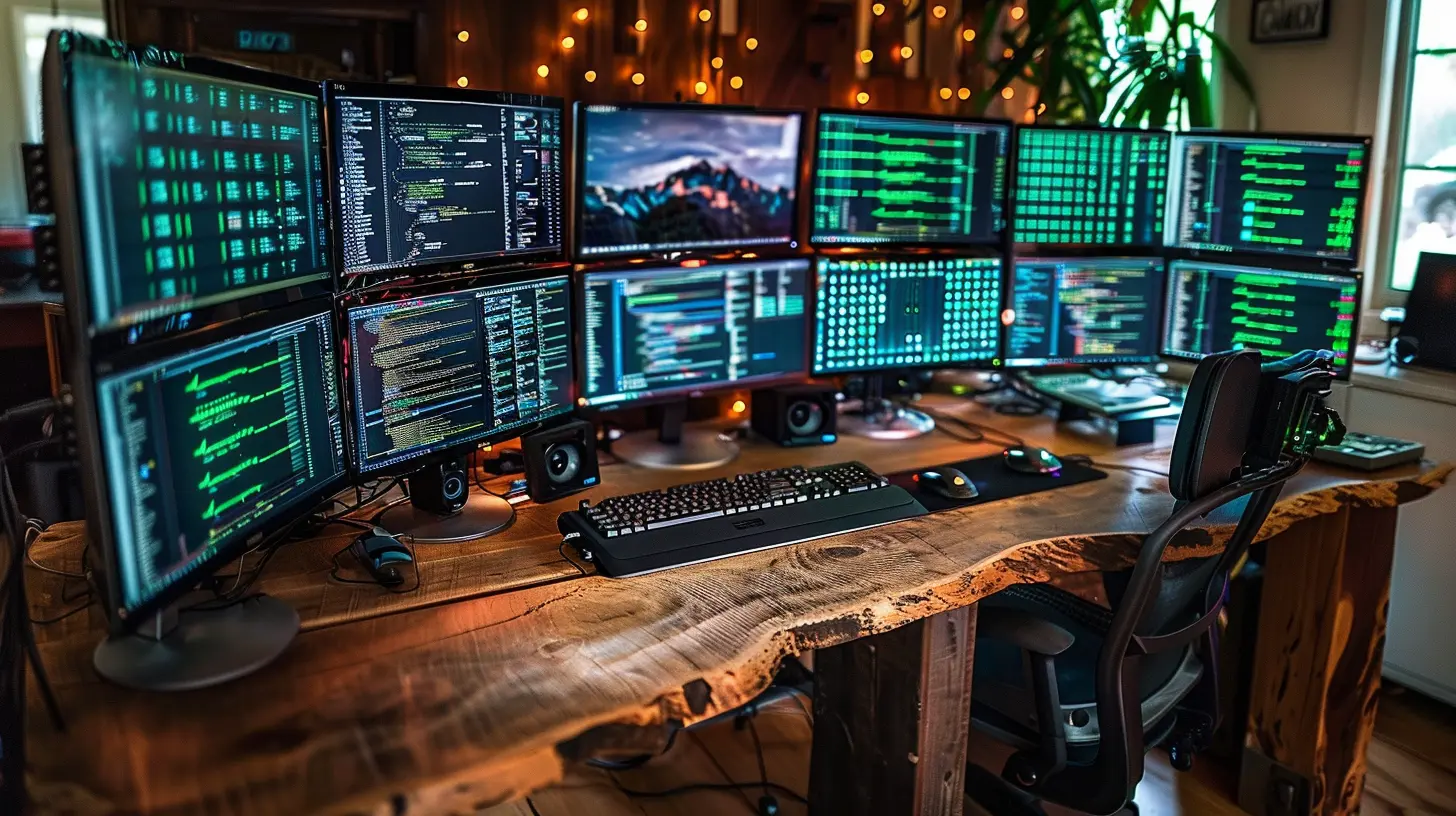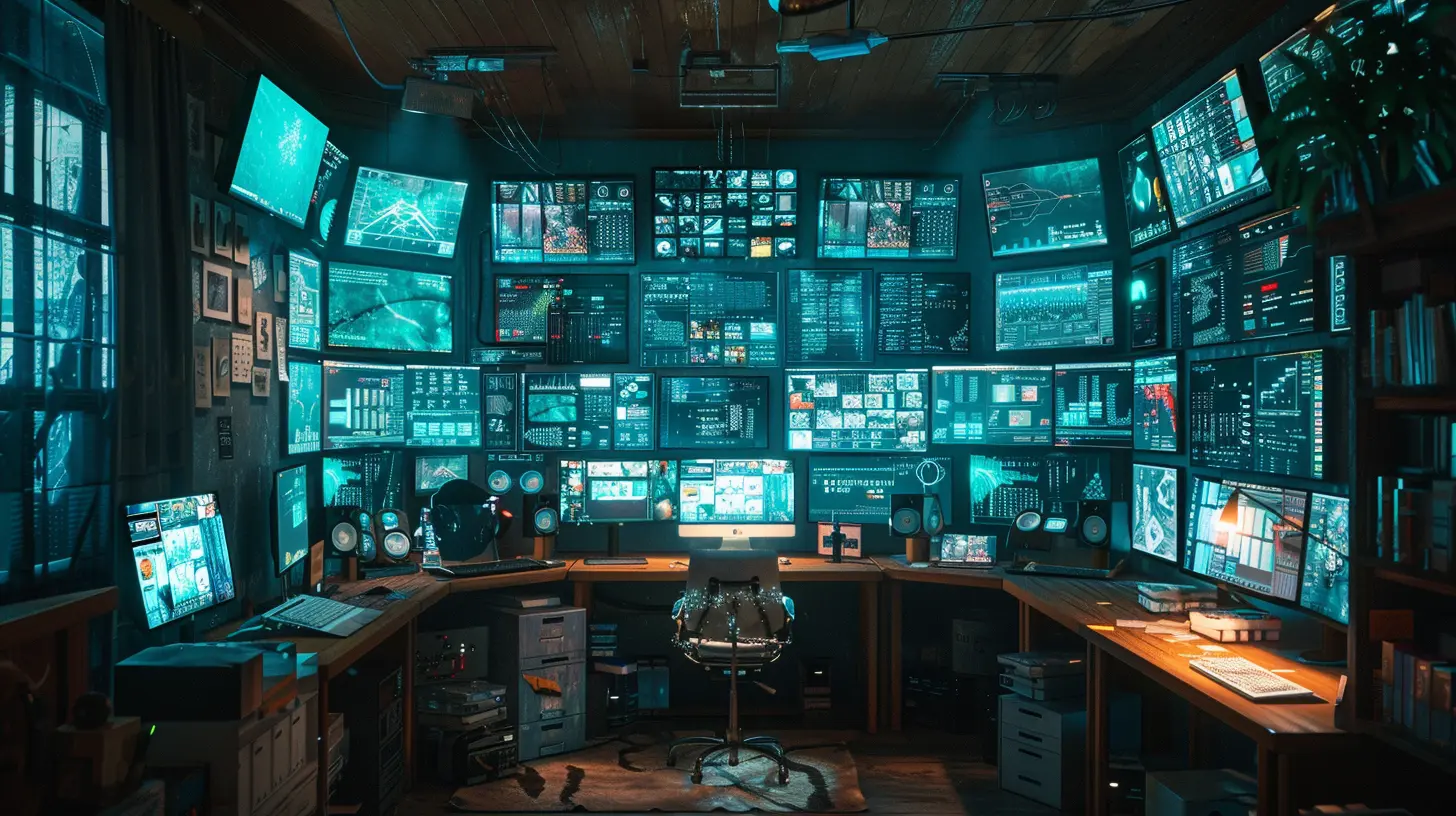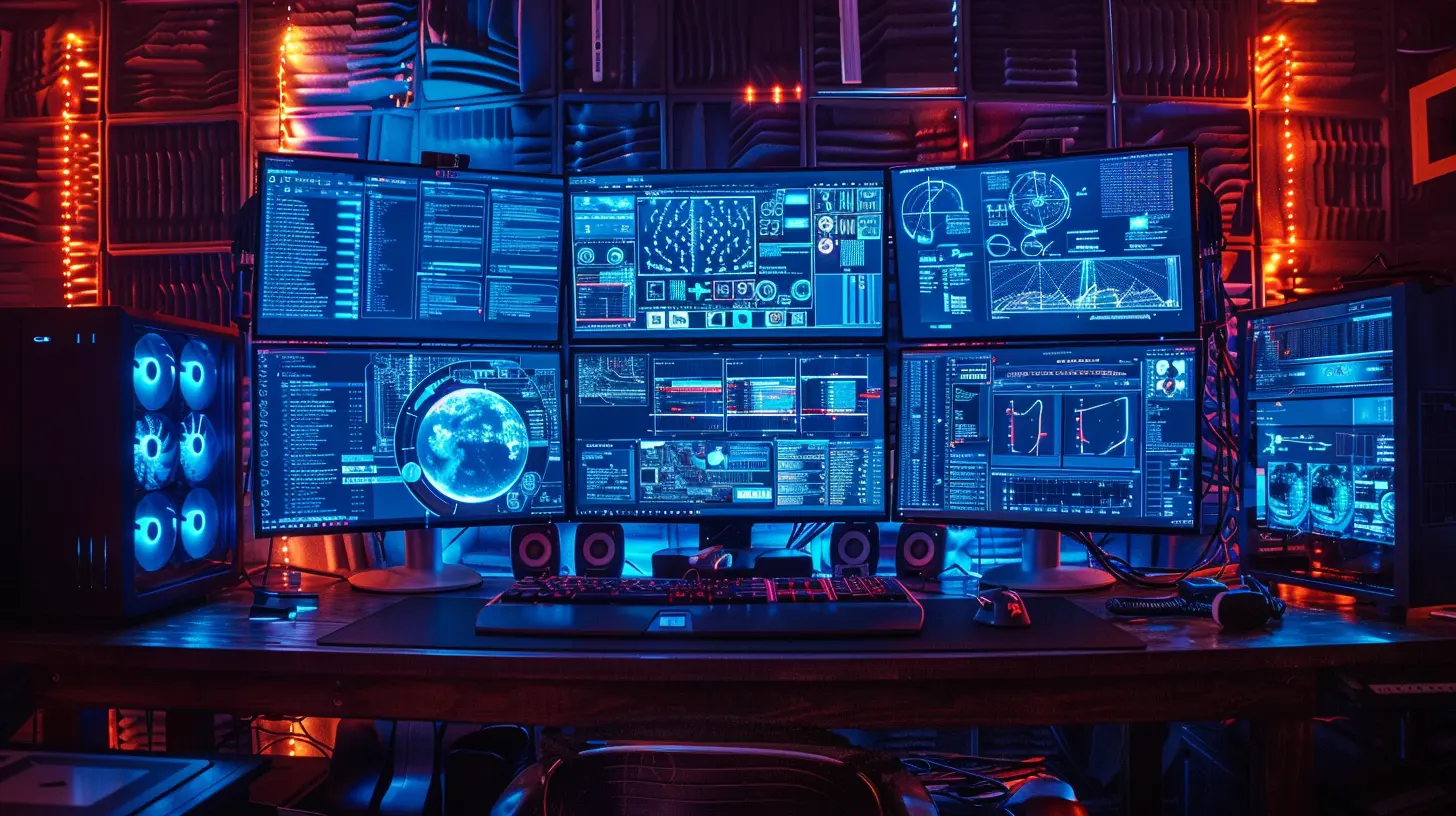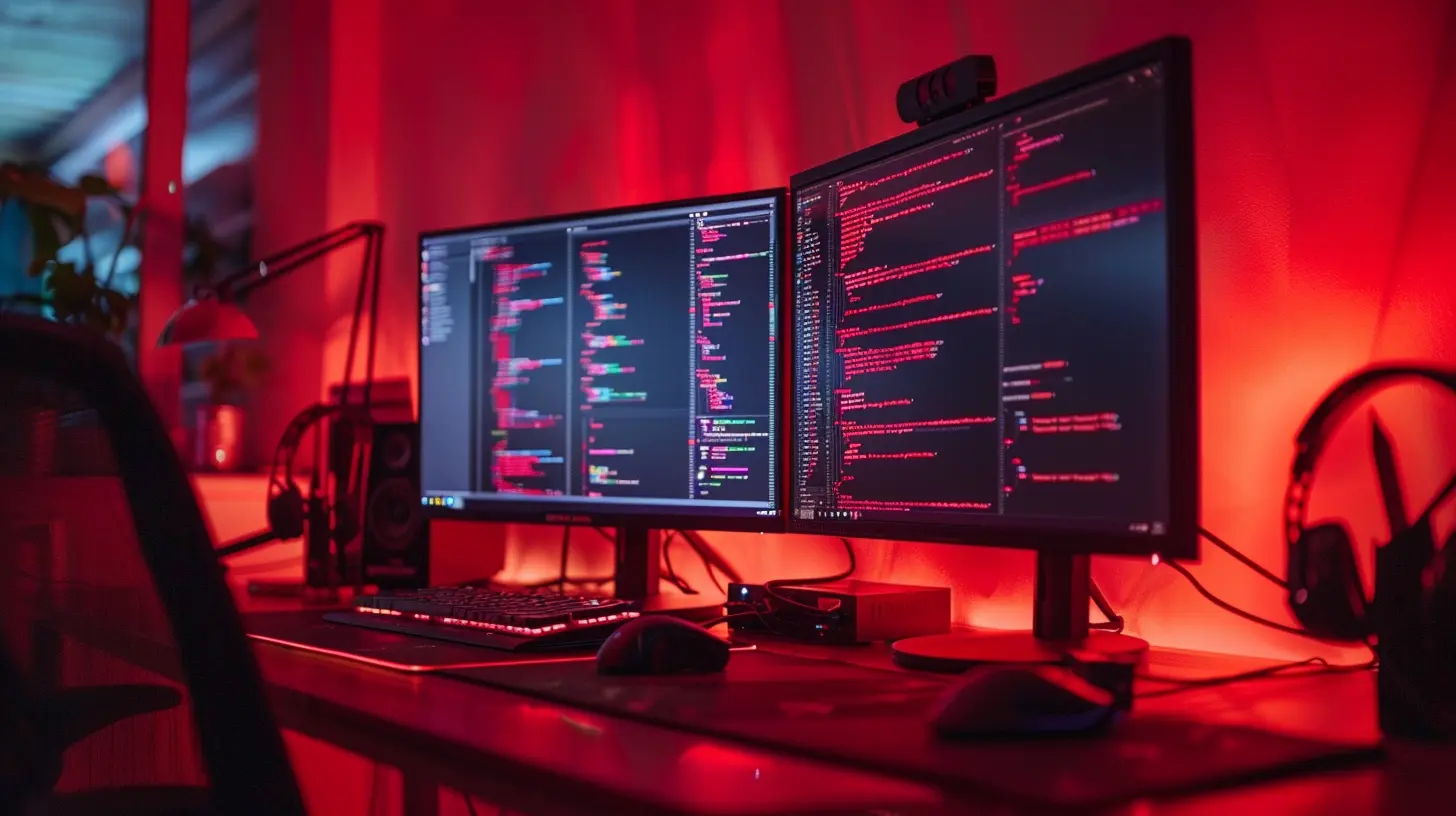How to Set Up a Multi-Monitor Workstation for Maximum Productivity
10 October 2025
Ever found yourself drowning in a sea of open tabs and cluttered windows? One moment, you're editing a document, the next you're bouncing between spreadsheets, emails, and a dozen Chrome tabs. It's chaotic, right? Well, a multi-monitor setup might just be the game-changer you need.
Having multiple screens isn't just about looking cool (though it does make you feel like a stock trader or a hacker in a Hollywood movie). It's about efficiency. It's about seeing more, clicking less, and getting things done faster. But setting up a multi-monitor workstation isn't as simple as plugging in an extra screen and calling it a day.
So, if you're ready to transform your workspace into a productivity powerhouse, let's dive right in.
Why You Need a Multi-Monitor Setup
Before we get into the nitty-gritty, let's address the big question: Why bother?1. Increased Workflow Efficiency – Say goodbye to the constant "Alt + Tab" chaos. With multiple screens, you can keep your essential apps open side by side.
2. Enhanced Multitasking – Work on a spreadsheet on one screen while referencing notes on another, or keep your email open without disrupting your main task.
3. Better Focus – Oddly enough, having more screens can reduce distractions since you won’t have to switch back and forth between windows.
4. Smoother Communication – If you work remotely, maintaining a video call on one screen while working on another is a game-changer.
Now that you're convinced, let’s set this bad boy up the right way.
Step 1: Choose the Right Monitors
Not all screens are created equal. Picking the right monitors can make or break your experience. Here’s what to consider:Screen Size & Resolution
- Bigger isn't always better – A 24” or 27” monitor works great for most setups.- Resolution matters – Aim for at least 1080p. If you're doing design work, 4K might be a better choice.
- Matching Monitors – For a seamless experience, try to use monitors that are the same model or at least the same size and resolution.
Refresh Rate & Response Time
- If you're a gamer, 144Hz+ refresh rate is golden.- For office work, 60Hz is plenty.
- Lower response times (below 5ms) help reduce ghosting and lag.
Panel Type
- IPS Panels – Best for color accuracy and viewing angles (ideal for designers).- TN Panels – Faster response times but weaker colors (good for gamers).
- VA Panels – Deep blacks and strong contrast (best for media consumption).

Step 2: Get the Right Hardware & Cables
To avoid headaches, make sure your hardware can handle multiple displays.Check Your Graphics Card
- Most modern GPUs support multiple monitors.- Check your ports – HDMI, DisplayPort, or USB-C?
- Use a docking station if your laptop has limited ports.
Cables Matter
- HDMI – Most common, but some older versions cap at 60Hz for 4K.- DisplayPort – Best for higher refresh rates and resolutions.
- USB-C – Convenient for laptops, but make sure it supports video output.

Step 3: Position Your Monitors Correctly
Here’s where things get interesting. You need to position your monitors in a way that enhances (not disrupts) your workflow.Single Central Monitor + Side Displays
- Ideal for general productivity.- Keep your main task in the center, secondary tasks (email, communication apps) on the side screens.
Dual Monitor Setup
- Side-by-Side: Good for coding, writing, and video editing.- Stacked (One Above the Other): Perfect if desk space is limited.
Triple Monitor Setup
- One Main Screen + Two Angled Screens – Creates an immersive workflow.- Curved Monitors? Great for reducing eye strain but can be pricey.
Adjust Height & Angle
- Keep the main monitor at eye level to avoid neck strain.- Angle side monitors slightly toward you for better visibility.
Step 4: Optimize Display Settings
A poorly configured setup can hurt your eyes and slow down your workflow. Here’s how to tweak your settings for maximum comfort.Adjust Scaling & Resolution
- In Windows, go to Display Settings > Scale and Layout.- On macOS, go to System Preferences > Displays.
Arrange Displays Properly
- Drag and arrange screens in your operating system to match their physical placement.- Make sure the mouse flows naturally between screens.
Enable Night Mode & Reduce Blue Light
- Activate Night Light (Windows) / Night Shift (macOS) for reduced eye strain.- Consider f.lux for better lighting adjustments.
Step 5: Master Multi-Monitor Productivity Hacks
Setting up the screens is just the start. Here’s where things get really fun.Use Keyboard Shortcuts
- Windows: `Win + Shift + ←/→` to move windows between monitors.- macOS: `Cmd + F1` to toggle mirrored displays.
Snap Windows Like a Pro
- Windows: PowerToys lets you create custom window layouts.- Mac Users: Magnet (a must-have window manager app).
Taskbar Management
- In Windows, go to Taskbar Settings > Show taskbar on multiple displays.- Save taskbar space by showing it only on the primary monitor.
Dedicated Monitors for Specific Tasks
- Main Monitor: Work & critical apps.- Second Monitor: Emails & communication tools.
- Third Monitor (if applicable): Reference material, dashboards, music player.
Step 6: Manage Cable Clutter
More screens mean more cables. Don’t let them turn your desk into a tangled mess.Tips for a Clean Setup
- Use cable clips or raceways to keep wires tucked in.- Velcro ties are a simple and effective way to bundle cables.
- Consider a monitor arm to free up desk space.
Step 7: Upgrade Your Accessories for Peak Efficiency
Your monitors are in place, but a few extra accessories can boost your workflow further.Get a Proper Desk & Chair
- Sit-Stand Desk – Helps avoid long hours of sitting.- Ergonomic Chair – Your back will thank you.
Invest in a Quality Keyboard & Mouse
- Mechanical Keyboard – Faster typing and satisfying feedback.- Ergonomic Mouse – Reduces wrist strain.
Consider a Vertical Monitor
- Ideal for coders who need to see more lines of code at once.Common Mistakes to Avoid
Even the best setups can be ruined by rookie mistakes. Here’s what NOT to do:🚫 Mixing completely different screens – Mismatched sizes and resolutions can be frustrating.
🚫 Poor placement – Monitors too high, too low, or too far apart can cause neck strain.
🚫 Ignoring ergonomics – If your posture is suffering, your productivity will too.
🚫 Cheap cables – Low-quality HDMI/DisplayPort cables can lead to poor performance.
Final Thoughts
Setting up a multi-monitor workstation is more than just plugging in extra screens. It’s about crafting a workflow that works for you. Whether you're juggling spreadsheets, coding, or designing, a well-planned setup can supercharge your productivity and make work feel effortless.So, what’s stopping you? Get those extra screens, fine-tune your setup, and take your productivity to the next level!
all images in this post were generated using AI tools
Category:
Computer HardwareAuthor:

Marcus Gray
Discussion
rate this article
1 comments
Eliza Horne
Optimize setup for efficiency.
October 15, 2025 at 10:28 AM

Marcus Gray
Thank you for your suggestion! Efficient setup is key to maximizing productivity in a multi-monitor workstation.


